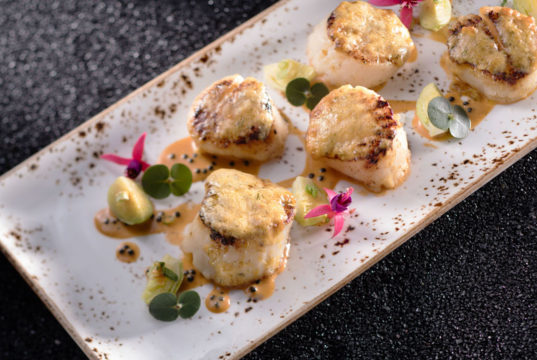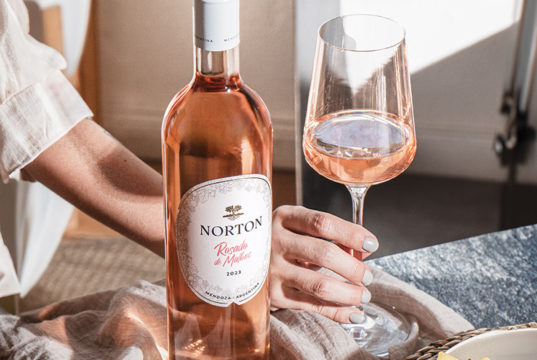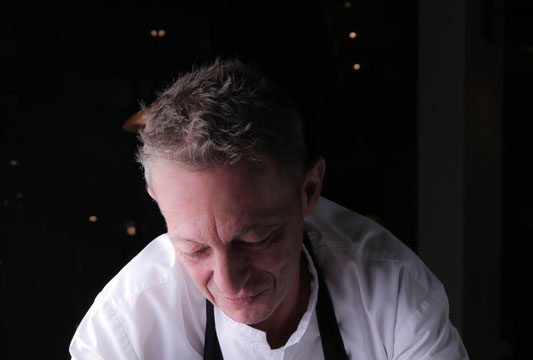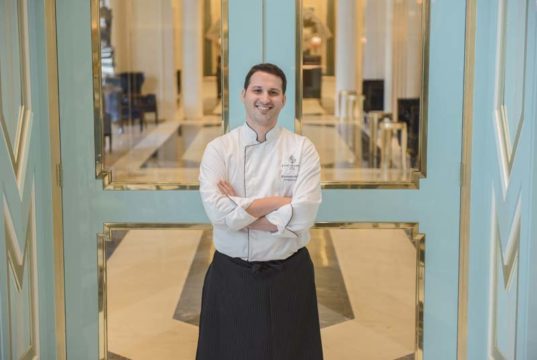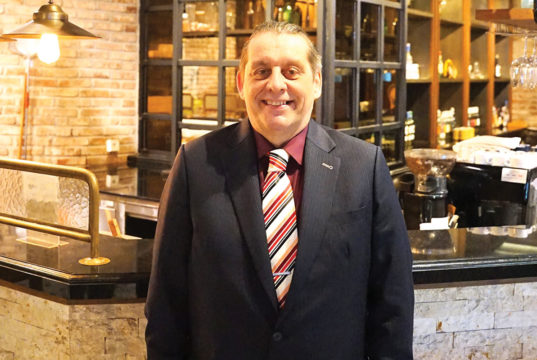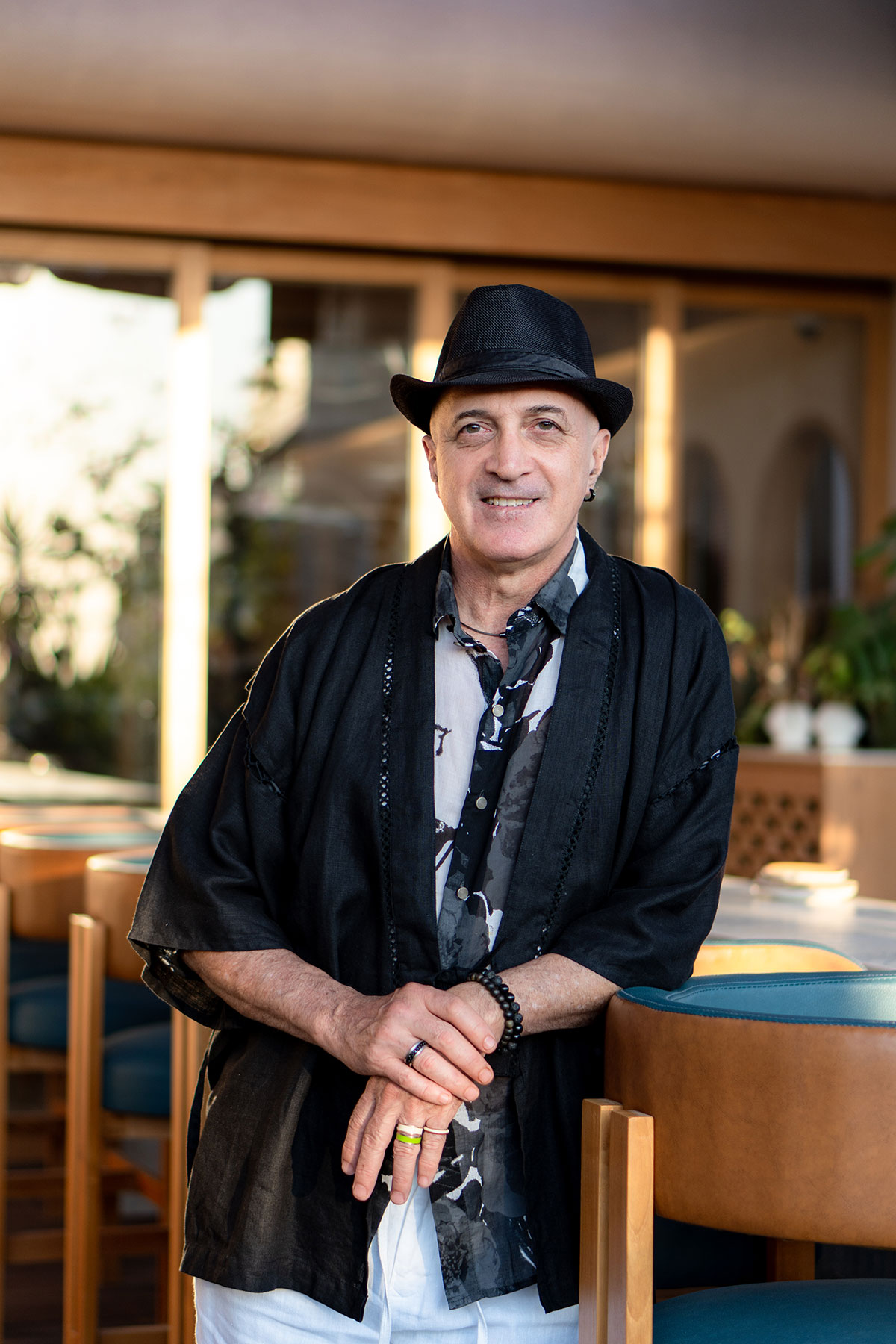Gabriel Fratini
A true culinary maestro with over 50 years of experience, Gabriel Fratini has crafted dishes for the likes of Michael Jackson, Roger Federer and more. From his humble beginnings to becoming a well-known chef, his journey is fuelled by passion, creativity and an unrelenting drive to explore the diverse landscapes of world cuisine. With his new restaurant in Canggu, GAB’s GastroBar, he’s bringing his signature flair and the unique Al Buio menu concept to the Bali dining scene, offering a gastronomic adventure like no other.
– by Rizky Adityo –
E: What inspired you to pursue a culinary career at such a young age?
A: I come from a humble background, and we often reflect on life after the war. My family wasn’t wealthy, and my father had an accident in his 40s, which meant he could no longer work. There wasn’t much food on the table; I mostly ate pasta every day. Special occasions like Christmas or Easter would bring a bit of variety, like ravioli or chicken, which felt like a big deal. When it was time for me to finish school and decide my future, my father suggested I become a bricklayer, carpenter or mechanic—something practical.
Fortunately, a friend of mine, who was two years older, attended culinary school and was working in Switzerland. I asked him if I should pursue cooking, mainly because I wanted to eat well. He encouraged me to go for it, saying we could work together later. So, I enrolled in cooking school, and I never looked back.
E: You’ve had the opportunity to work around the world. How have these diverse culinary landscapes influenced your cooking style?
A: The landscape greatly influences the cuisine, primarily dictated by the local products. Take Japan, for example; their focus is on fresh fish and vegetables. Many restaurants there catch fish daily and will discard anything that’s even one day old.
In every country I’ve worked in, I draw inspiration from what’s available. For instance, in Bali, sourcing fresh seafood and high-quality meat can be challenging. However, I adapt my cooking to utilise what’s available locally, blending local flavours with my culinary knowledge.
 E: You’ve been cooking for 50 years and witnessed many changes in cooking methods and food presentation. What significant evolutions have you observed?
E: You’ve been cooking for 50 years and witnessed many changes in cooking methods and food presentation. What significant evolutions have you observed?
A: Fifty years ago, we didn’t have terms like umami or techniques like sous-vide. Cooking was more aligned with traditional French styles. I learnt the Italian basics, of course, but many techniques, like béchamel, were French. The presentation was quite different back then—photos from 50 years ago look almost black-and-white compared to today’s vibrant dishes. Nowadays, cooking shows emphasise balance in flavours, such as the right acidity or sweetness, which was less common in the past.
E: You’ve also been a private chef for many iconic figures. Can you share a memorable or challenging moment while cooking for such distinguished clients?
A: Since the 1980s, I’ve had the opportunity to cook for numerous celebrities, from movie stars to athletes. I always approach every person as an individual, not just as a title. Whether you’re a king or an everyday person, you still need to eat. The challenge lies in discovering what each person enjoys and crafting a dish that resonates with them. Not everyone famous necessarily knows good food, so it’s crucial to understand their preferences.
E: Now at GAB’s GastroBar, you’re introducing the Al Buio menu. Can you elaborate on this concept?
A: The Al Buio menu is a traditional Italian concept. In family-run restaurants, you often won’t find a written menu. Instead, the owner or chef will come to you and describe what’s available for that day. My approach differs slightly—I don’t serve just one dish as the special. Instead, I let diners sample a bit of everything. As a chef, I believe in providing a variety of flavours rather than having someone eat the same piece of meat for half an hour. This way, you can enjoy a range of tastes and leave with a full and satisfied palate.
E: GAB’s GastroBar is not just a restaurant; it’s a space filled with stories. Can you share the inspiration behind one of your signature dishes?
A: One of my signature dishes is a dessert—tiramisu. It has an interesting backstory. Tiramisu was invented in Northern Italy by a man who passed away recently. He created it in 1969. When I attended cooking school in the mid-1970s, tiramisu was still relatively unknown, only gaining fame in the late ‘80s or ‘90s. The original recipe calls for just five ingredients: ladyfingers, mascarpone cheese, egg yolk, sugar and coffee. After cooking school, I started making tiramisu using this traditional recipe. When I moved to Hong Kong in the early ‘80s, I introduced it there for the first time, and it remains one of my best dishes to this day.
E: What advice would you give to aspiring chefs?
A: My advice is that it’s a tough profession. If you want to pursue it, you must do so with passion and love for your craft. You need to be fast and have a strong personality. By blending these qualities with creativity and imagination, you’ll set yourself apart from the rest.
Grilled Scallop on Purple Sweet Potato Purée with Ricotta, Honey and Roasted Red Bell Pepper
Ingredients:
- 1 large Hokkaido scallop
- 1 large purple sweet potato (approx. 200g, use as needed)
- 1 red bell pepper (use as needed)
- 50g fresh ricotta cheese
- 1 tsp honey
- 2 tbsp olive oil
- Salt and white pepper to taste
Method:
- Preheat the oven to 200C. Roast the red bell pepper until softened and the skin begins to peel away, approximately 20-25 minutes. Once done, transfer the pepper to a bowl and cover with plastic wrap to let it cool. Once cooled, peel off the skin and shred the pepper into long strips. Drizzle with olive oil, then season with salt and pepper. Set aside.
- Boil the purple sweet potato in salted water until tender. Remove from the water, peel off the skin and mash the potato until smooth. For a creamier texture, you can blend it with a splash of water. Season with salt and pepper to taste. Keep the purée warm by placing it in a small pot over low heat.
- In a small bowl, combine the ricotta cheese with honey. Season lightly with salt and pepper, then mix with a fork until well combined.
- Season the scallop with salt and white pepper. Heat a non-stick frying pan over medium-high heat with a little olive oil. Sear the scallop until it develops a golden crust on one side, then flip and cook until golden on the other side. The scallop should be just cooked through but still tender in the centre.
Assemble the Dish
Spread the warm purple sweet potato purée on a plate using the back of a spoon. Place the seared scallop in the centre. Top the scallop with the ricotta mixture, then garnish with the roasted red bell pepper strips. For a final touch, drizzle a few drops of honey over the dish and decorate with edible flowers, if desired.
Exquisite Taste Volume 45
GAB’s GastroBar
The Luc Rooftop
Jalan Pantai Berawa, Canggu
Bali 80363, Indonesia
T: (+62) 85338080001
E: gabsgastrobar@gmail.com
W: gabsgastrobar.com
IG: @gabsgastrobar








